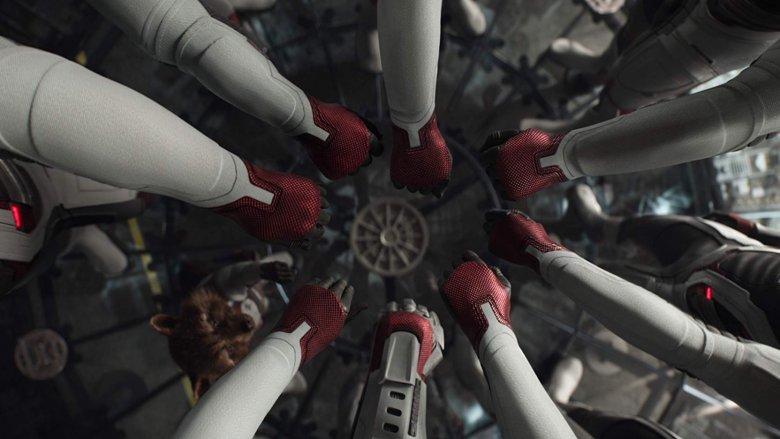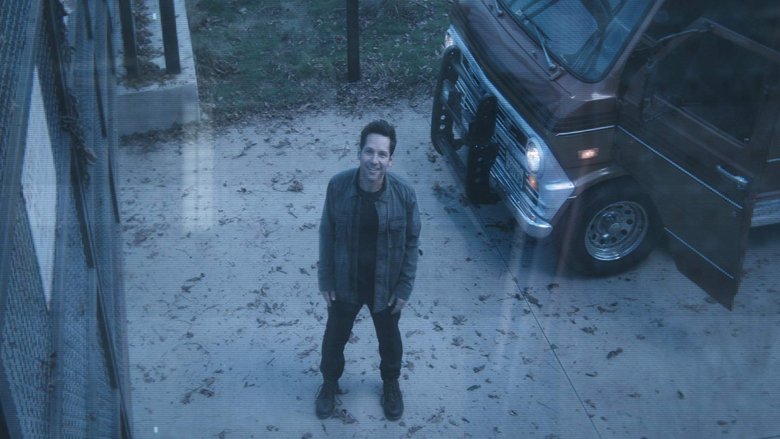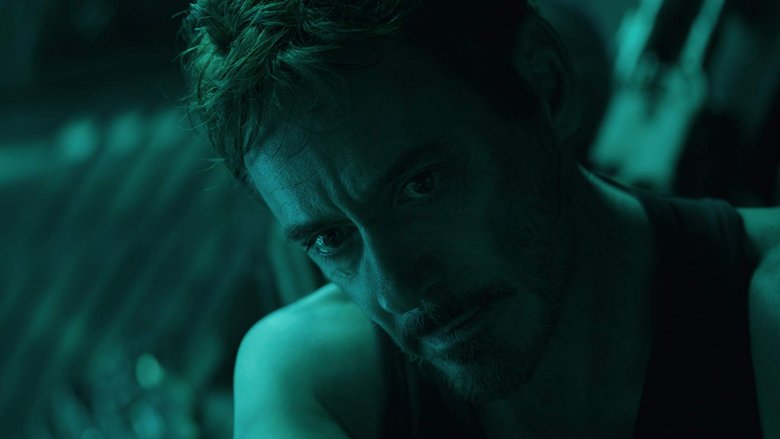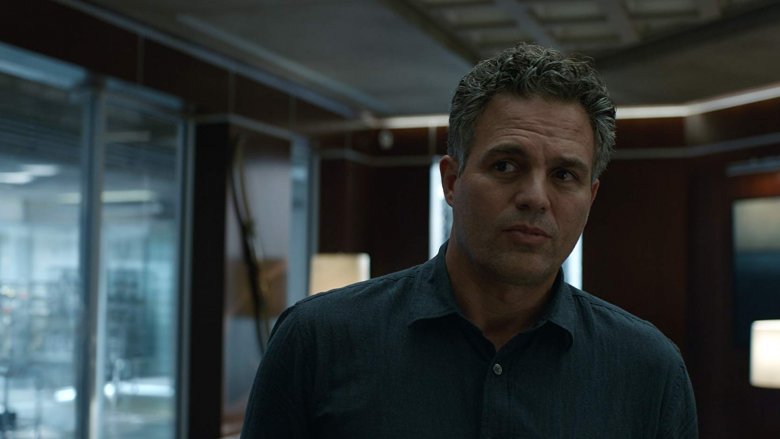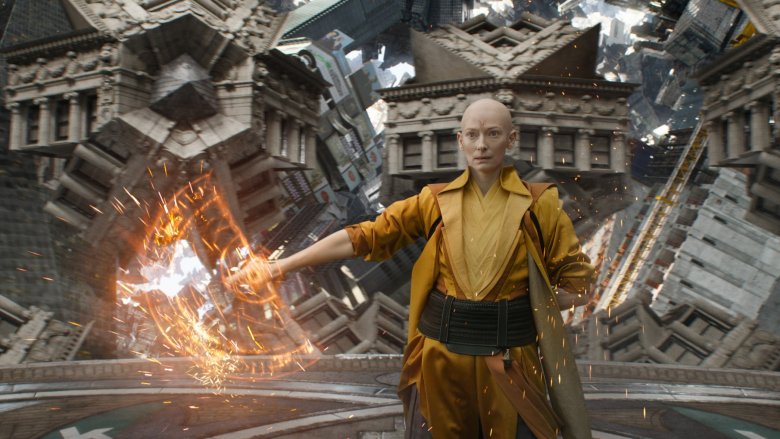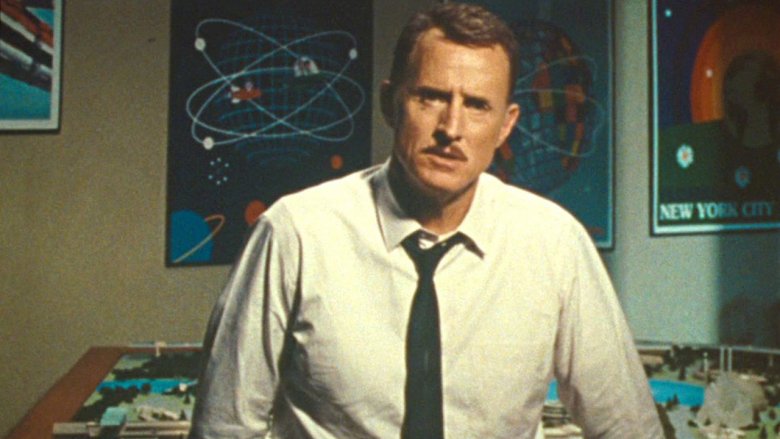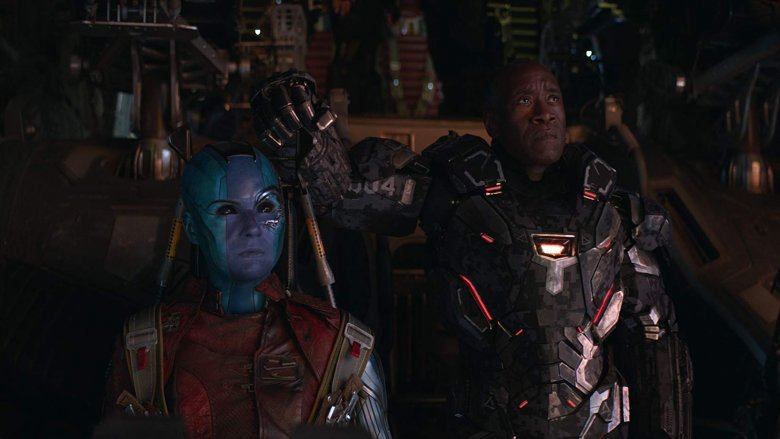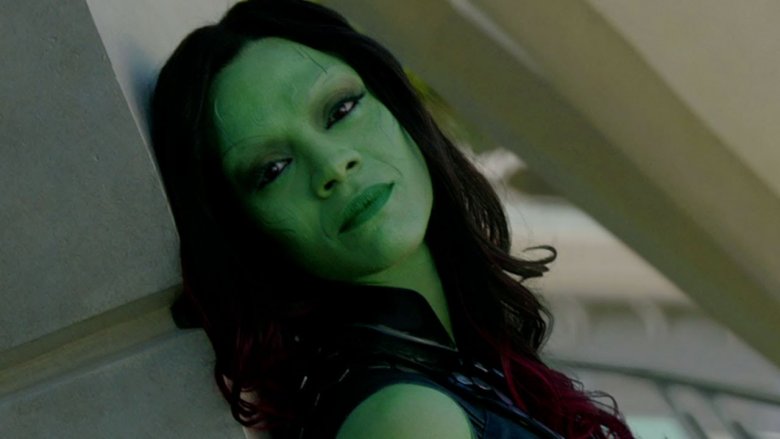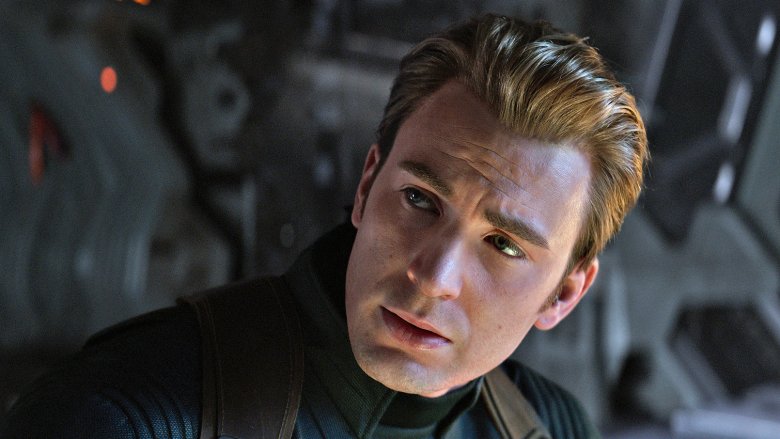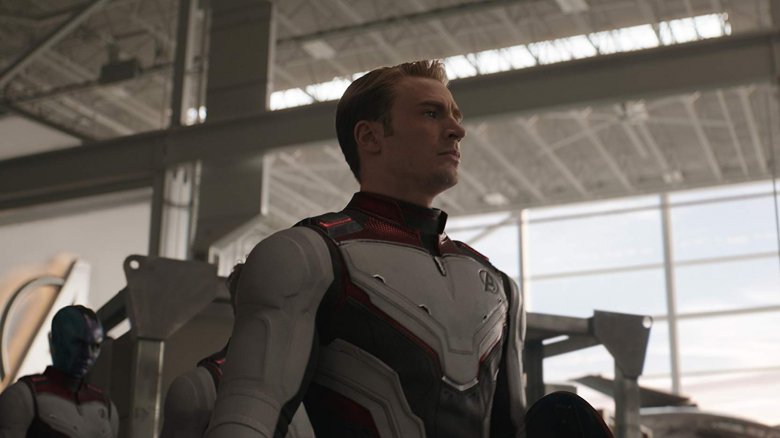All The Time Travel In Avengers: Endgame Explained
One of the biggest questions surrounding Avengers: Endgame leading up to its release was how exactly Earth's Surviving Mightiest Heroes were going to bring back their snapped comrades. We knew at least some of them would come back, of course (Black Panther's not about to bow out after just one solo film), but what we didn't know was how. Well, now that the film is here, we know that one of the most prominent theories surrounding that question — time travel — was correct.
So, how does time travel work in the Marvel Cinematic Universe? What are the implications of it spinning out of Endgame? What's left of that tech in the universe? We're here to talk about all that and more as we break down the various threads, branch realities, and conundrums that came with the MCU's first foray into spacetime adventuring.
Oh, and in case you hadn't figure this out already, there are MAJOR SPOILERS for the entire film ahead.
The inspiration
As many fans theorized in the months leading up to the film, the Quantum Realm visited in Ant-Man and the Wasp did indeed have a major role to play in Avengers: Endgame, and it all began when Scott Lang returned after being trapped there for five hours, only to discover that five years had passed on Earth. Scott's time travel idea was based on this simple observation of his predicament: If time works differently in the Quantum Realm, and the Quantum Realm is in fact its own pocket reality, can it be used — with Pym Particles as the shrinking agent — to leave our universe at one point in time and come out at a different point?
When Tony Stark initially dismissed the idea, Scott, Steve Rogers, and Natasha Romanoff turned to Bruce Banner for help, and he believed he could make the idea into something practical. Using the Quantum Tunnel designed by Hank Pym, Bruce tried to send Scott back in time by only a week. But instead of pushing Scott through time, he pushed time through Scott, leading to strange backwards and forwards aging issues. It did technically result in at least a little bit of time travel, but another big brain had to refine the idea to make it something usable.
An idea refined
Tony Stark's initial reluctance to collaborate on the time travel idea wasn't just scientific in nature. It was also personal, as Tony was unwilling to risk losing the family he'd built in the process of altering the past. Tony's mind wouldn't stop working, though, and after running some models, he realized he had a working formula for a "spacetime GPS" that would allow the Avengers to harness the quantum access granted by Scott and Hank Pym's work. With this new tech in hand, they could navigate the Quantum Realm to a specific date and a specific place.
Picking targets was the next great obstacle, and Black Widow pointed out that with the right year, they could collect three different Infinity Stones in New York City alone. So, three travel teams were assembled. Tony, Steve, Scott, and Bruce would travel to New York in 2012 (the year of The Avengers) for the Space, Time, and Mind Stones. Rocket and Thor would head to Asgard in 2013 (the year of Thor: The Dark World) to get the Reality Stone. And Natasha, Clint, Nebula, and Rhodey would head to space in 2014 to collect the Power (on Morag) and Soul (on Vormir) Stones. If only it were that simple, right?
The rules of time travel
As the time travel discussions began, Scott suggested that everything would be fine as long as they followed "the rules of time travel," meaning no altering historical events or speaking with their past selves or other tampering. Scott and Rhodey later pushed this argument further by mentioning virtually every film about time travel ever made, only to have Bruce cut them short. In the Marvel Cinematic Universe, at least, their "realistic" version of time travel does not work the way many other films have postulated.
According to Bruce, you don't change your future if you visit your past, because when you do that your past becomes your future on your own individual timeline, which means your present is now part of your past, and so on. This is, among other things, why we see things like Captain America fighting himself and even Nebula killing her own past self without wiping her present self from existence. That's simply how time travel works in this world, and that's important to remember in the context of the film's overall plot.
Branching realities
When the New York team arrived in 2012, they split up to snatch the Space, Mind, and Time Stones. It turns out that the Time Stone was actually in New York City at the time of the Battle of New York, though the Avengers of 2012 didn't know it. Bruce Banner travels to New York's Sanctum Sanctorum, where he finds The Ancient One (Tilda Swinton) fighting her own defensive battle as the Chitauri attack rages on.
Bruce tries to explain to her that they need the Stone for their own future purposes, but she declines to hand it over, going so far as to split Banner's consciousness from his Hulk body so they can talk without fighting. As she explains, the Infinity Stones are actually responsible for helping to maintain the flow of time. If you remove one, it creates a "branch reality" in which people will suffer untold chaos in the absence of the Stone, particularly the Time Stone as it serves as the weapon of the Sorcerer Supreme. It's here that Banner makes a key point about the film's use of time travel: The Avengers can't stop the chaos of branch realities, but they can erase them by returning the stone to the exact spot where they removed it from the timeline. When that happens, the branch reality ceases to exist, and so does the suffering it caused. This is why returning the Stones rather than destroying them is so important.
Further back
Captain America said before the Avengers started the journey that they should be ready for anything, even when they knew the place they were traveling to, and his words proved prophetic in the hunt for the Space Stone, which in 2012 was still in the form of the Tesseract. Tony Stark had the Stone secure in a case, but was knocked across the room by the 2012 Hulk coming down the stairs, sending the Tesseract sliding across the floor and ... right into Loki's path. The God of Mischief used the Stone to open a portal and escape Asgardian prosecution, leaving Tony and Steve with no Space Stone and only enough Pym Particles for one more trip through the Quantum Realm.
So, Tony came up with an idea: Use those Pym Particles to go backwards again, this time to 1970, when he knew both his own father Howard and Hank Pym would be at a S.H.I.E.L.D. facility in New Jersey. The trip allowed Tony to steal the Tesseract, while also meeting up with his own father just before his own birth. It also allowed Cap to steal more Pym Particles for the return trip, while also getting a little reminder of just how much he loved Peggy Carter.
Two Nebulas, one cybernetic system
The four-person space team was divided into two two-person teams, with Natasha and Clint heading to Vormir to get the Soul Stone and Nebula and Rhodey staying on Morag to follow Peter Quill's path to the Power Stone. In the process, we learned what happened when a cyborg time travels into the same time she used to live in. When Nebula landed in Morag, she was relatively close to her own 2014 self, and the neural network that existed in both of their brains suddenly became a shared space for two consciousnesses. This not only allowed Nebula to realize that Thanos was growing aware of their plan, but more importantly it allowed 2014 Nebula access to her own future memories. Thanos took full advantage of this, and used those memories to learn exactly what he had to do to get all of the Infinity Stones not with a galaxy-wide search, but by traveling through the Quantum Realm via stolen Pym Particles so he could steal all six from the Avengers in upstate New York after their time heist was complete.
Familiar faces return
Through the magic of time travel, Avengers: Endgame allowed us to get new glimpses of characters who were seemingly killed off for good in Infinity War. This was particularly exciting when it came to Loki and Gamora, who were found in 2012 and 2014, respectively, showing us parts of their stories from The Avengers and Guardians of the Galaxy we didn't get to see before.
In Loki's case, he used the time travel as an opportunity to snag the Tesseract and disappear into space. In Gamora's, she bonded with a future version of Nebula, realized her place as an enemy of Thanos a bit earlier, and helped keep the Infinity Stones out of his hand when she traveled to the present.
So, what happened to both of them? Well, whatever Loki did with the Tesseract was, according to Bruce Banner's logic, erased when Captain America returned the Space Stone to the point where it was taken. So Loki's timeline stayed relatively intact, meaning he's still dead. In Gamora's case ... well, unless Tony Stark's snap included her (she was no longer part of Thanos' army when he did it), she's out there somewhere, and Star-Lord is determined to find her. Specifically, her past self, who never got to know or fall in love with Quill.
Magic and science
Because this is the first time we've ever seen time travel in the Marvel Cinematic Universe, Avengers: Endgame gives us a fascinating look not just at how it works, but at how it affects the larger world. In more than one of the team's time-travel voyages, that included how magic and various magical characters interacted with the science behind the voyage.
In 2012, Bruce Banner made contact with The Ancient One, and while she didn't immediately seem to sense that he was from the future, she wasn't surprised when he asked for Stephen Strange. She was already aware of Strange's place in the timeline, and was also clearly aware of how time travel and Infinity Stones would interact.
Things got even more interesting on Asgard in 2013, when Thor encountered his mother Frigga on the day she died in Thor: The Dark World. Frigga sensed almost immediately that she was looking at a future version of her son, and when he tried to deny it she noted that she was "raised by witches" and she "see(s) with more than eyes." So, at least some magic users in the MCU, including Doctor Strange, have a clear sense of what time travel looks like, and that could have major implications for future films.
The future of time travel
The third act of Endgame features all of the surviving Avengers returning to their compound with the Infinity Stones in hand. And then everything goes sideways when Thanos travels to the future courtesy of Nebula, who has infiltrated the compound with the Pym Particles stolen from her own future self. Thanos' ship destroys the time platform, and then Thanos himself destroys the Quantum Tunnel when he see Captain Marvel trying to make a break for it with the Stones.
That doesn't eradicate time travel from the MCU, though, as we see when Captain America steps onto a brand-new platform constructed by Bruce at the end of the film. Cap uses the remaining Pym Particles to journey back into the past to return the Stones. What this ultimately means is that time travel is not only still theoretically possible, but still practically possible in the MCU. As long as Henry Pym has or can produce more Pym Particles, the Avengers (or someone else) could make jumps through time again in the future.
The First Avenger's second chance
Even after the victory over Thanos, the noble sacrifice of Tony Stark, and the return of all of the Decimated beings to the universe, Avengers: Endgame delivered one more happy ending. Captain America did not simply jump to the past with the Infinity Stones, but returned them and then jumped further into the past to be with Peggy Carter again. That means that, through all the years he was frozen and all the years after he was thawed out, Captain America got to live a semi-regular life while his past self was living out the life we already know in the MCU.
But just how regular was that life? Cap declines the opportunity to fill Sam Wilson in on the past, but we do know that he took Mjolnir, which he'd been proven worthy to wield, and while he brought his repaired shield back to the future with him, he did not seem to bring the hammer. Did he leave it in the past? Did he have adventures with it? Did he and Peggy save the world in their own quiet way during the Cold War? Will we ever see any of those adventures? Cap was coy, but perhaps future MCU stories won't be.
